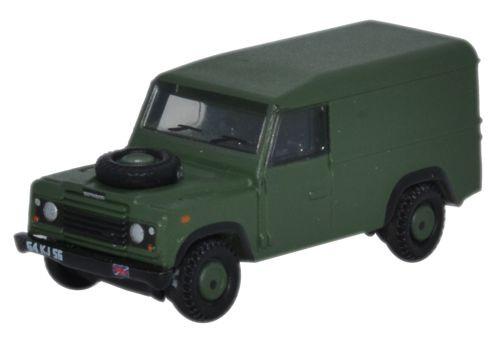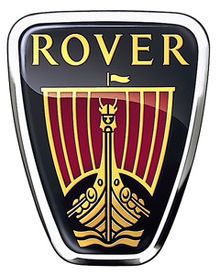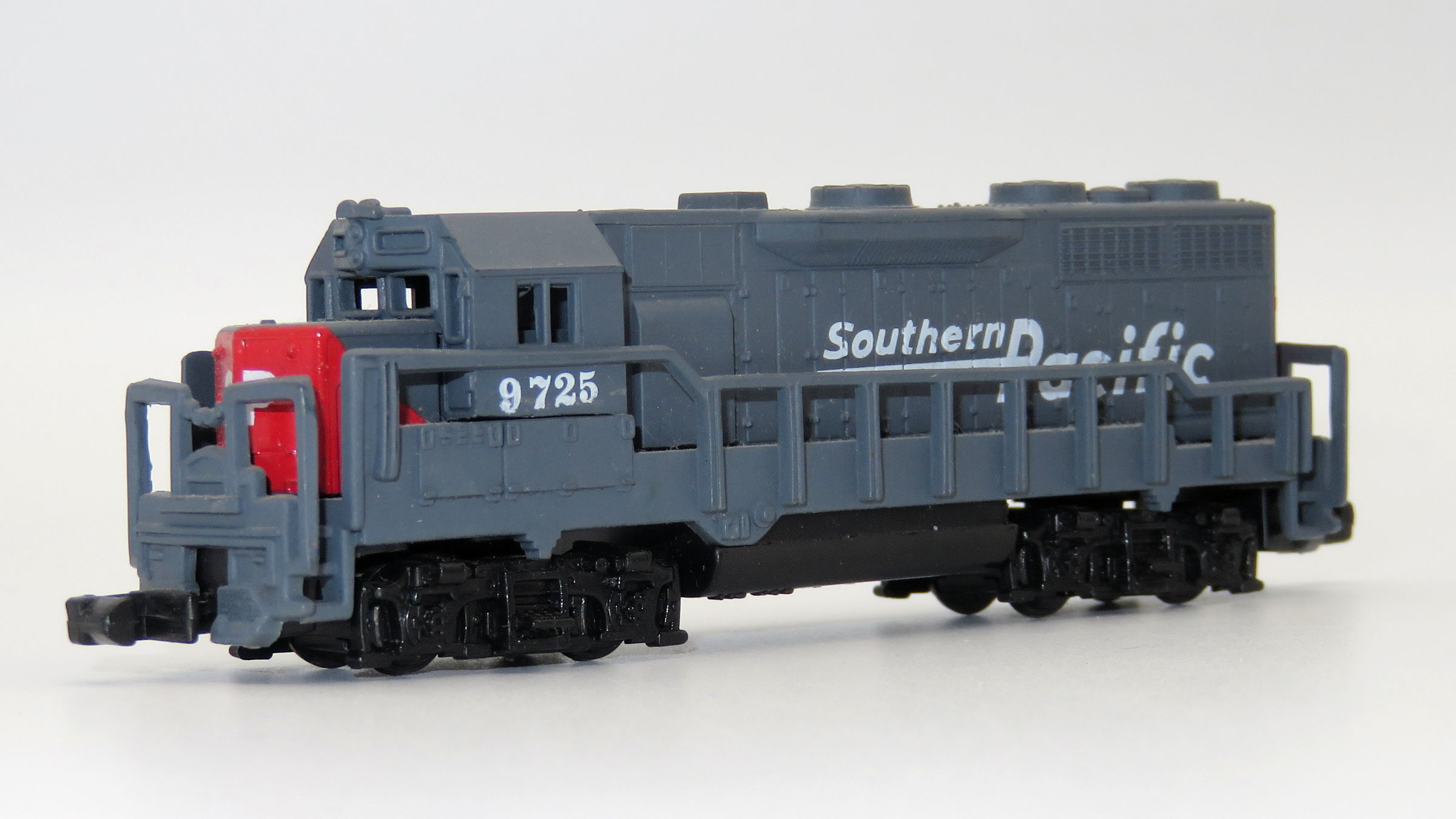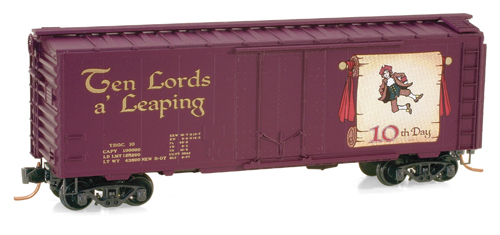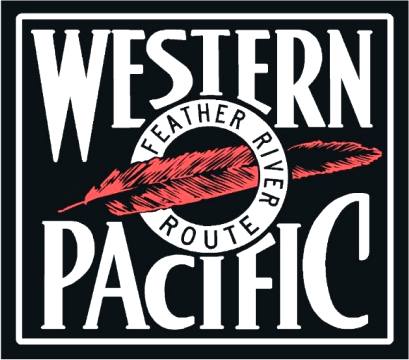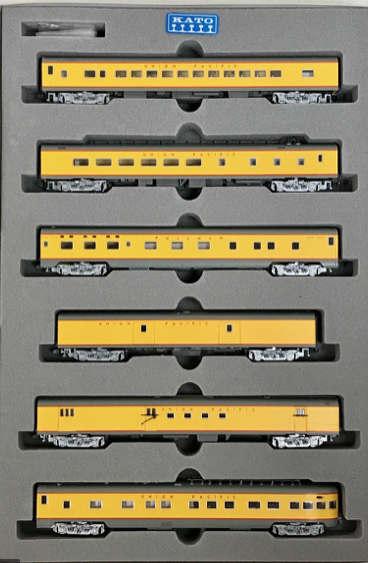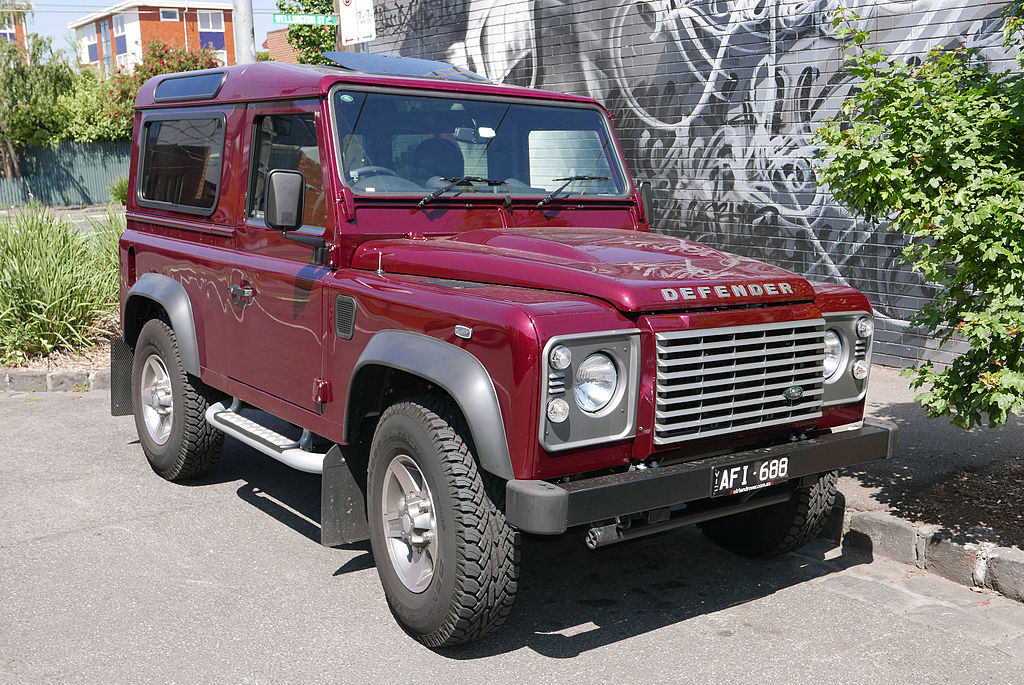Oxford Diecast - NDEF003 - Automobile, Land Rover, Defender - British Army - 64-KJ–56
| Stock Number | NDEF003 |
| Original Retail Price | £4.35 |
| Brand | Oxford Diecast |
| Manufacturer | Oxford Diecast |
| Body Style | Oxford Diecast Land Rover Defender LWB |
| Image Provider's Website | Link |
| Prototype Vehicle | Automobile, Land Rover, Defender (Details) |
| Road or Company Name | British Army (Details) |
| Road or Reporting Number | 64-KJ–56 |
| Paint Color(s) | Dark Military Green |
| Item Category | Vehicles |
| Model Type | Automobile |
| Model Subtype | Land Rover |
| Model Variety | Defender, LWB |
| Prototype Region | Europe |
| Prototype Era | UK Era 7: BR post-TOPS (1971-1986) |
| Scale | 1/148 |
Specific Item Information:
Oxford Diecast N NDEF003 Land Rover Defender, LWB (Long Wheel Base) 110", AA
Dressed in dark military green with black chassis and black mudguards and featuring two radio aerials on either side of the bonnet, our understated little N scale Land Rover Defender looks all ready to tackle the rough military terrain. Registered 64-KJ–56, this hard top version features the Union Flag on the front bumper and the regimental crest on the back door. The interior is also moulded in dark green with black steering wheel. Other external features include black chassis, bumpers and wheel hub caps, as well as the inclusion of a spare wheel on the bonnet. The wheel centres reflect the main body colour. Also clearly defined, you will find the Land Rover badge and Defender lettering on the front of the bonnet above the radiator and on the offside rear wing.
Dressed in dark military green with black chassis and black mudguards and featuring two radio aerials on either side of the bonnet, our understated little N scale Land Rover Defender looks all ready to tackle the rough military terrain. Registered 64-KJ–56, this hard top version features the Union Flag on the front bumper and the regimental crest on the back door. The interior is also moulded in dark green with black steering wheel. Other external features include black chassis, bumpers and wheel hub caps, as well as the inclusion of a spare wheel on the bonnet. The wheel centres reflect the main body colour. Also clearly defined, you will find the Land Rover badge and Defender lettering on the front of the bonnet above the radiator and on the offside rear wing.
Prototype History:
The Land Rover Defender (initially called the Land Rover Ninety and Land Rover One Ten) is a British four-wheel drive off-road vehicle developed in the 1980s from the original Land Rover Series which was launched at the Amsterdam Motor Show in April 1948. After a continuous run of 67 years production finally ended on 29 January 2016 when the last Land Rover Defender, with the number plate H166 HUE, rolled off the production line. A special edition Defender Works V8, with 400bhp, was announced in January 2018. The next-generation model, codenamed L663, will be completely redesigned and come in two wheelbase sizes.
From Wikipedia
From Wikipedia
Road Name History:
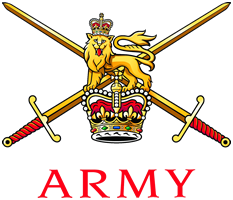 The British Army is the principal land warfare force of the United Kingdom, a part of British Armed Forces. As of 2019, the British Army comprises just over 79,300 trained regular (full-time) personnel and just over 27,200 trained reserve (part-time) personnel.
The British Army is the principal land warfare force of the United Kingdom, a part of British Armed Forces. As of 2019, the British Army comprises just over 79,300 trained regular (full-time) personnel and just over 27,200 trained reserve (part-time) personnel.
The modern British Army traces back to 1707, with an antecedent in the English Army that was created during the Restoration in 1660. The term British Army was adopted in 1707 after the Acts of Union between England and Scotland. Members of the British Army swear allegiance to the monarch as their commander-in-chief, but the Bill of Rights of 1689 requires parliamentary consent for the Crown to maintain a peacetime standing army. Therefore, Parliament approves the army by passing an Armed Forces Act at least once every five years. The army is administered by the Ministry of Defence and commanded by the Chief of the General Staff.
The British Army has seen action in major wars between the world's great powers, including the Seven Years' War, the Napoleonic Wars, the Crimean War and the First and Second World Wars. Britain's victories in these decisive wars allowed it to influence world events and establish itself as one of the world's leading military and economic powers. Since the end of the Cold War, the British Army has been deployed to a number of conflict zones, often as part of an expeditionary force, a coalition force or part of a United Nations peacekeeping operation.

The modern British Army traces back to 1707, with an antecedent in the English Army that was created during the Restoration in 1660. The term British Army was adopted in 1707 after the Acts of Union between England and Scotland. Members of the British Army swear allegiance to the monarch as their commander-in-chief, but the Bill of Rights of 1689 requires parliamentary consent for the Crown to maintain a peacetime standing army. Therefore, Parliament approves the army by passing an Armed Forces Act at least once every five years. The army is administered by the Ministry of Defence and commanded by the Chief of the General Staff.
The British Army has seen action in major wars between the world's great powers, including the Seven Years' War, the Napoleonic Wars, the Crimean War and the First and Second World Wars. Britain's victories in these decisive wars allowed it to influence world events and establish itself as one of the world's leading military and economic powers. Since the end of the Cold War, the British Army has been deployed to a number of conflict zones, often as part of an expeditionary force, a coalition force or part of a United Nations peacekeeping operation.
Manufacturer Information:
Established in 1993, Oxford Diecast is a British Company that specializes in high-quality die-cast metal vehicles. Produced in various scales, the firm's models are marketed as collector items, gifts, and promotional products. Their largest production goes to OO scale (1:76) and in 2015 they introduced railway products under 'Oxford Rail' brand.
Their N-scale collection is using the 1:148 scale ratio as most British manufacturers.
Their N-scale collection is using the 1:148 scale ratio as most British manufacturers.
Item created by: Alain LM
on 2017-07-25 13:45:44
If you see errors or missing data in this entry, please feel free to log in and edit it. Anyone with a Gmail account can log in instantly.
If you see errors or missing data in this entry, please feel free to log in and edit it. Anyone with a Gmail account can log in instantly.


